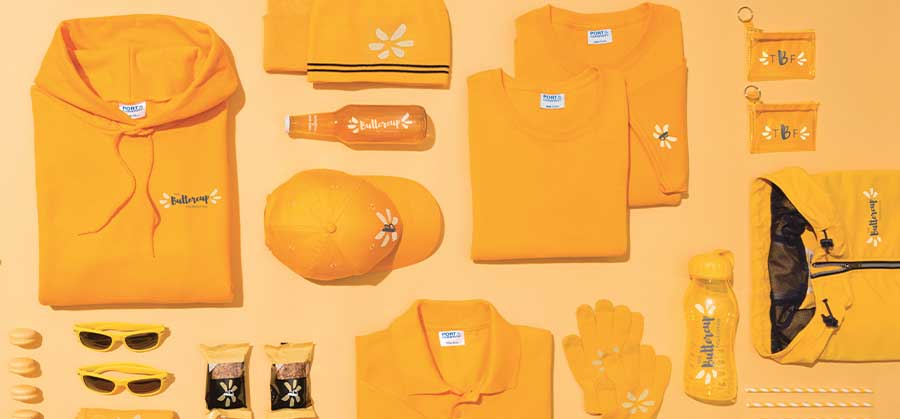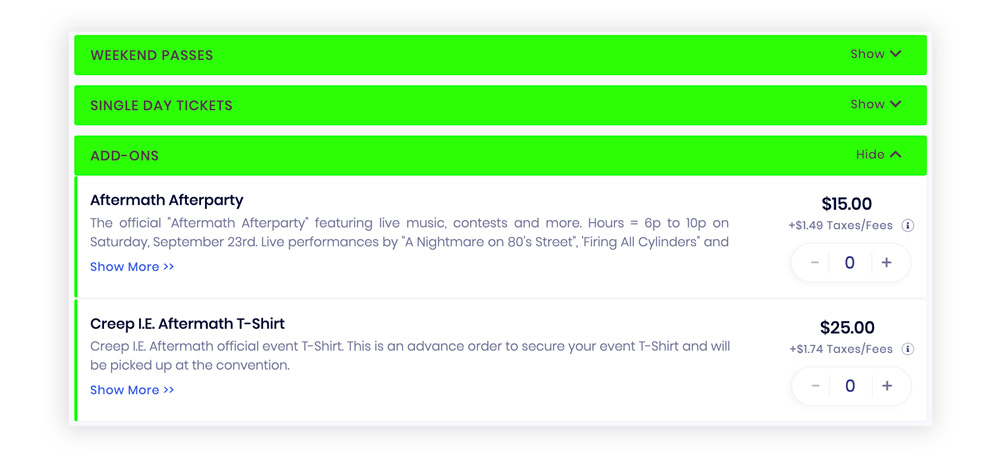8 Strategies to Boost Event Merchandise Sales
Selling event merchandise offers event planners an excellent opportunity to enhance attendee engagement and generate additional revenue streams. From conceptualization to post-event sales, having a strategic approach ensures that your merchandise not only resonates with your audience but also contributes to the overall success of the event.
Let’s explore the essential steps to maximize your merchandise strategy.
1. Designing Appealing Merchandise
To begin with, understanding your audience’s tastes is key to designing merchandise that will sell. Whether it’s eco-friendly apparel, tech gadgets, or limited-edition items, choosing products that align with your audience’s interests makes all the difference.
Think about incorporating trending designs or materials that have relevance to your event or audience, such as sustainable fabrics for an environmentally conscious crowd. Limited-edition items can create excitement and add exclusivity, especially for niche groups within your attendees.
Popular merchandise ideas for events include:
- T-shirts and hoodies with event branding
- Custom hats or beanies
- Reusable tote bags or backpacks
- Branded water bottles or travel mugs
- Event-specific posters or art prints
- Keychains, pins, and patches
- Eco-friendly items like bamboo utensils or metal straws
- Phone accessories such as pop sockets or cases
- Collectible lanyards or badges
- Event-exclusive stickers or decals
- Limited-edition merchandise (e.g., vinyl records, books, or DVDs)
- Autographed items or memorabilia
- Customized wristbands or bracelets
- Tech gadgets like portable chargers
- Branded face masks or hand sanitizers (for health-conscious events)
2. Choosing the Right Vendors
Selecting the right vendor plays a critical role in ensuring the quality and timely delivery of your merchandise. It's important to work with vendors who have experience in the event space and understand the specific needs of event merchandise production.
Vendor reliability, production capabilities, and sustainability practices should be key factors when evaluating options. Consider obtaining quotes from several vendors to compare pricing, flexibility, and customer service. Vendors who offer eco-friendly options can also appeal to audiences that prioritize sustainability.
3. Pricing Your Merchandise
Setting the right price for your merchandise is essential for balancing profitability with accessibility. You’ll want to consider cost-based pricing to ensure that all expenses are covered while keeping your audience in mind.
Exclusive items or limited-time offers allow for dynamic pricing, where you can charge a premium without alienating customers. By introducing tiered pricing, such as offering different versions of a product (basic versus premium), you can cater to a range of budgets and increase overall sales.
4. Effective Online Sales Strategies
An online store provides a way to extend your sales reach beyond the physical event, allowing attendees to purchase merchandise before and after the event.
Ensure that your online store offers a seamless user experience, from product browsing to checkout. Optimizing the store with search engine-friendly descriptions and easy navigation will make it easier for potential buyers to find your merchandise. Including a variety of secure payment options further simplifies the purchasing process, encouraging more sales.

5. Promoting Merchandise Before the Event
Promotion is a key factor in driving sales, especially before the event begins.
- Social media and email marketing are powerful tools for building excitement around your merchandise.
- Highlight unique aspects of the products, such as limited availability or special collaborations, to capture your audience’s attention.
- Teaser campaigns, such as sneak peeks of the merchandise or behind-the-scenes videos of the production process, can build anticipation and increase pre-event sales.
- Interactive social media content, like polls asking users to choose their favorite designs, can make your audience feel more connected to the products and eager to buy.
6. Boosting On-Site Sales
At the event itself, merchandise placement and visibility are crucial. Setting up booths in high-traffic areas like entrances or near food and drink stands ensures maximum exposure. Displaying products creatively and incorporating live demonstrations (if applicable) can draw more attention. Offering promotions, such as last-day discounts or bundle deals, can entice attendees to make a purchase before they leave.
Staff should be knowledgeable and friendly, ready to assist with questions, and ensure a smooth transaction process.
7. Streamlining Checkout Processes
Both in-person and online, an easy checkout process is vital.
For in-person sales, make sure there are enough staff members available to prevent long lines and offer a variety of payment methods, including mobile and contactless options. For online sales, keep the checkout process simple by minimizing the number of steps required to complete a purchase. Quick and efficient transactions encourage impulse buys and reduce cart abandonment.
8. Post-Event Sales
Once the event is over, your merchandise strategy doesn’t have to end.
Post-event sales provide another chance to boost revenue and keep the momentum going. Sending follow-up emails with exclusive discounts or promoting leftover merchandise on social media can drive additional sales.
Creating a permanent online store for event-branded products allows attendees to purchase memorabilia from past events, further extending the life of your merchandise.
|
Sell Merchandise with Purplepass Not just for selling tickets, merchandise |
Successfully marketing and selling event merchandise requires a comprehensive, audience-driven approach. From designing appealing products to ensuring an easy checkout process, every step plays a part in maximizing sales and boosting engagement.
With thoughtful planning, event planners can create a merchandise experience that not only enhances the event but also leaves a lasting impression on attendees while generating valuable revenue. Use these strategies to build a merchandise plan that aligns with your event’s goals and creates long-term value.







